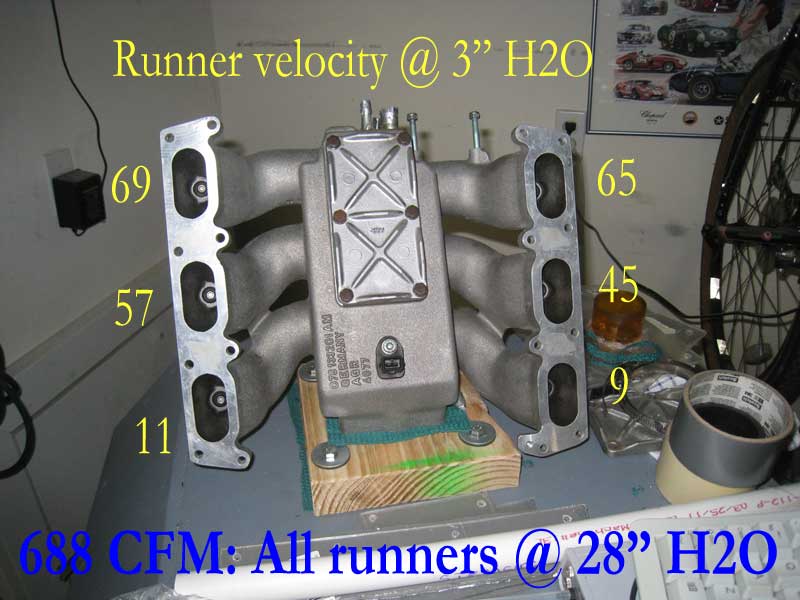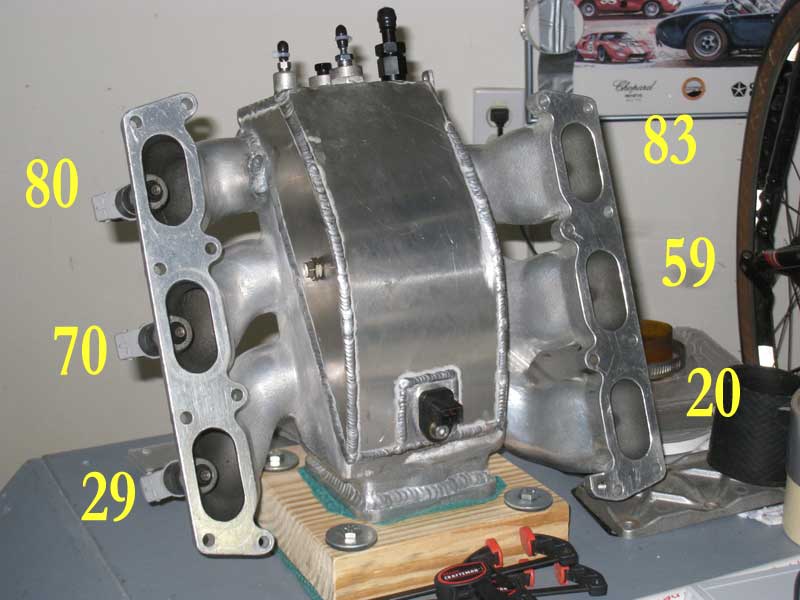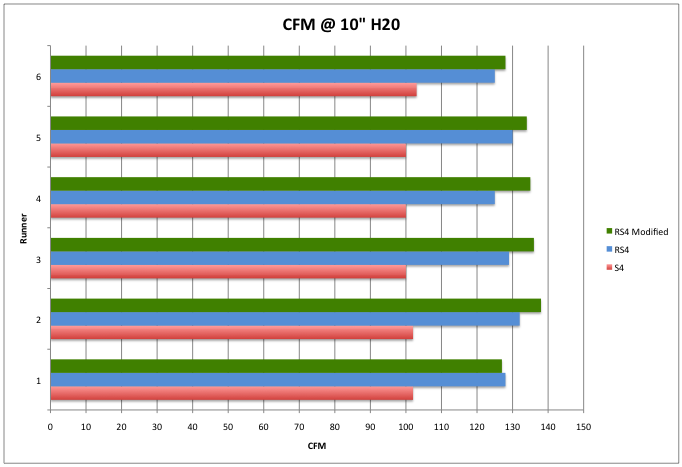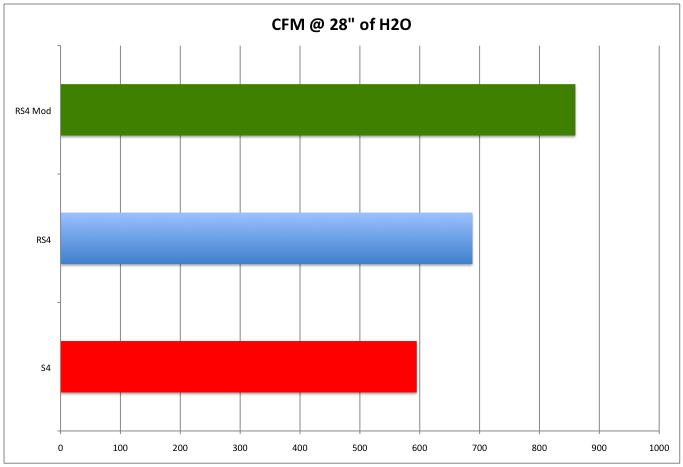Testing was done on a series of Audi B5 S4 and RS4 intake manifolds over a span of several weeks, the running description of the tests is in the Blog section categorized under Testing. What follows is a consolidation of the main results from those tests.

Shown above is the individual runner CFM at 10″ H2O along with the total airflow with all runners open.
After acquiring a velocity probe designed for measuring exhaust direction airflow velocity I went and put the stock intake manifold back on the flow bench to measure the air velocity at the various runner outlets while all were open and a steady air stream was pushed through the manifold. The values shown are in feet per second (FPS).
I went from zero intake manifolds to test out to having two RS4 intake manifolds waiting to go on the bench, each needing a different adapter from the one I’d made up for the stock intake manifold, so back to work making adapters.
 Completed flow testing on an unmodified RS4 intake manifold.
Completed flow testing on an unmodified RS4 intake manifold.
 One observation while testing the RS4 intake manifold was how much further up inside the runner the fuel injector sits. Comparing the placement to that of the S4 intake manifold the RS4 fuel injector sits approximately 40mm from the exit where on the S4 intake manifold the fuel injector is approximately 22mm from the runner exit.
One observation while testing the RS4 intake manifold was how much further up inside the runner the fuel injector sits. Comparing the placement to that of the S4 intake manifold the RS4 fuel injector sits approximately 40mm from the exit where on the S4 intake manifold the fuel injector is approximately 22mm from the runner exit.
 Not too surprisingly the RS4 intake manifold flowed on average 27% more than the S4 intake manifold based on measurements taken at 10″ of H2O.
Not too surprisingly the RS4 intake manifold flowed on average 27% more than the S4 intake manifold based on measurements taken at 10″ of H2O.
The most apparent differences between this modified RS4 IM and the stock RS4 IM are that the inlet where the throttle body mounts is larger, the adapter having holes positioned further out than the stock RS4 IM. Interestingly the diameter of the entry area is nearly the same between the modified and stock RS4 IM’s, with only a 1mm difference, perhaps due to the porting that was done around the entry area. It is evident that the surface of the entry area is much smoother on the modified IM than on the stock RS4 IM. The plenum has been significantly expanded, and there has been some porting done to the trumpets inside the plenum as well as the inlet area. The modified IM does not have the vacuum port near the left side of the entrance.
The results are interesting and pretty clearcut, though I don’t really know what they mean in terms of how these parts will compare once installed on a vehicle.
The comparison data is also shown between the S4 intake manifold that I use, which is the later design type, RS4, and modified RS4 intake manifolds.
 At this point I’m unsure of what to make of the air velocity numbers. The modified IM has outlet velocities higher than the stock RS4 IM, perhaps due to the slightly larger opening allowing more air in at the same test depression, but with the same size runners it becomes necessary for the air to exit faster.
At this point I’m unsure of what to make of the air velocity numbers. The modified IM has outlet velocities higher than the stock RS4 IM, perhaps due to the slightly larger opening allowing more air in at the same test depression, but with the same size runners it becomes necessary for the air to exit faster.
With a variety of intake manifold configurations tested one question that was posed was, is the intake manifold entry a limiting factor for airflow, or are the runners when all are open?
Because increasing runner size with a fixed inlet size was not an option I decided to log the airflow through the IM with a combination of runners open to see if there was any information available that might help answer the question.
 Based on the near linear rate of airflow increase through the intake manifold as additional runners are opened it does not look like the intake manifold inlet is a limit on the airflow with the stock intake manifold.
Based on the near linear rate of airflow increase through the intake manifold as additional runners are opened it does not look like the intake manifold inlet is a limit on the airflow with the stock intake manifold.
It appears that the limit for the amount of airflow that passes through the intake manifold, when all of the runners are open, are the runners.




